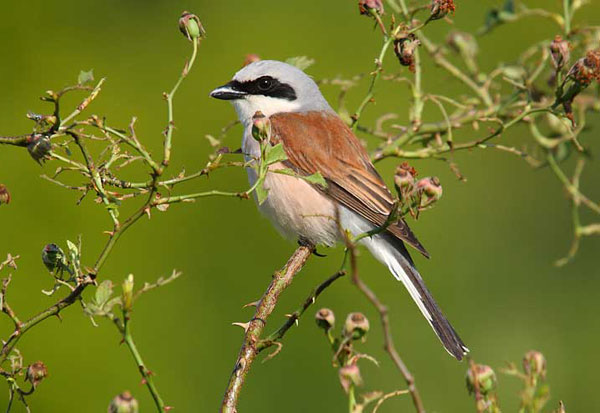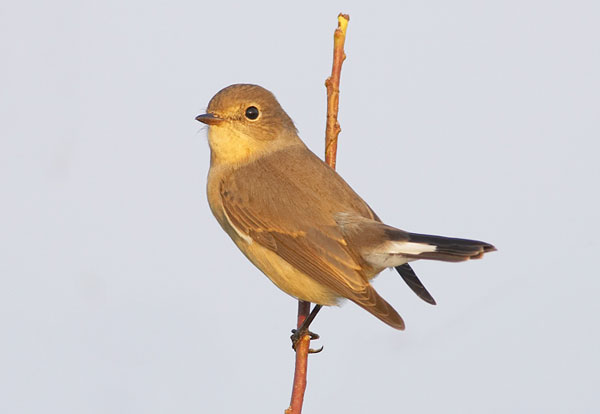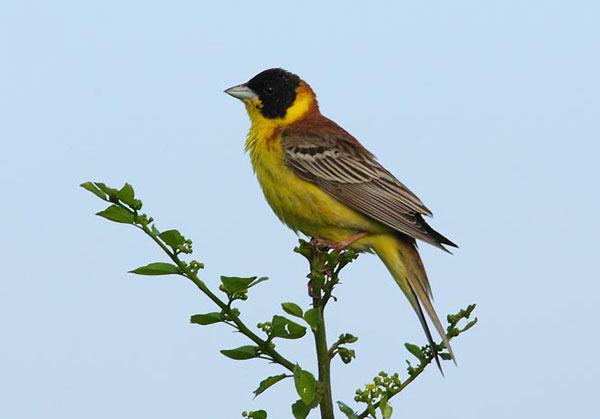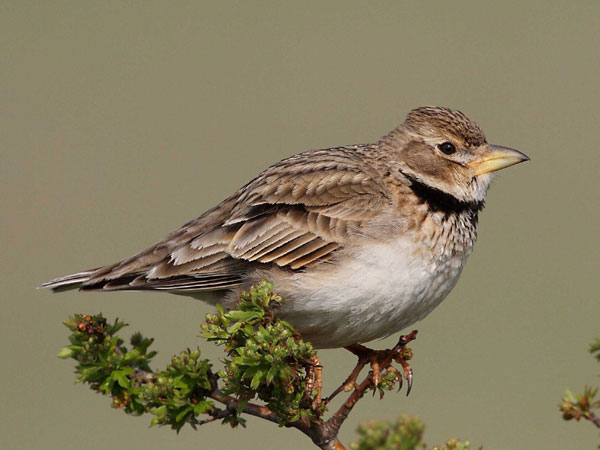|

Copy and Paste the code below in to the html of your website:
Copy and Paste the code below in to the html of your website:
Copy and Paste the code below in to the html of your website:
|
  |
|
Few countries can rival Bulgaria's scenic splendour and diverse nature. The landscape changes every few kilometres to reveal alpine mountains, rivers with spectacular canyons, vast meadows and forests, coastal wetlands and sandy beaches. Bulgarias geographic position in the south-eastern corner of the Balkan peninsular and the wide range of habitats ensure outstanding wildlife diversity. The country is becoming an increasingly popular destination for wildlife enthusiasts, photographers and film makers.
The country's unspoiled nature is undoubtedly its greatest asset. Bulgaria's flora and fauna are amazingly diverse. The higher plants number about 3,500 species and include more than 400 Bulgarian and Balkan endemics and nearly 70 species of orchids. Bulgaria boasts the richest dragonfly and butterfly fauna in Europe. With the presence of some 400 bird species recorded, Bulgaria has something to offer birders during all seasons. The country's most valuable natural features are preserved in three national parks and numerous wildlife and nature refuges.
The Danube Wetlands
Like pearls on a necklace, several natural wetlands adorn the lower stream of the Danube, ending with the famous Srebarna Lake ("The Silver Lake"). It is the only Bulgarian nesting site for a colony of Dalmatian Pelicans and a home for more than 260 other bird species, about 100 of which breed there. In Srebarna and in some of the smaller Danubian wetlands birders can see Pygmy Cormorant, all the European herons, bitterns and egrets, Ferruginous Duck, White-tailed Eagle, Spoonbill and Glossy Ibis, Whiskered and White-winged Black Terns and many other amazing birds. During migration and in winter, Srebarna may reward you with spectacular views of thousands of White-fronted and Greylag Geese, other waterfowl and passerines.

Red-backed Shrike, Bulgaria, copyright Tony Davison, from the surfbirds galleries
Coastal Dobrudja
Coastal Dobrudja is the northernmost part of the Black Sea coast, locked between the Romanian – Bulgarian border and Cape Kaliakra. The green plain gradually rolls towards the coastal sand dunes and beaches. Two old riverbeds cut through the lowland. Their former estuaries are occupied by the lakes of Duranjulak and Shabla. In winter, hundreds of thousands of wild geese, among which birders may find almost the whole population of the globally threatened Red-breasted Goose, choose this area as their wintering grounds. Over 80 species of bird breed in the region of the two lakes, the most interesting of them being Marsh Harrier, Collared Practincole, Ferruginous Duck and Red-footed Falcon. The two lakes are one of the few places in Europe where Paddyfield Warbler, a typical Asian species, can be seen.
To the south the plain descends steeply towards the expanse of the sea and at Cape Kaliakra the sea cliffs tower up to 70m. Here are the latest remnants of the Great Steppe, formerly occupying the bigger part of Dobrudja. Cape Kaliakra is one of the few places in Europe hosting Rose-coloured Starling, Pied Wheatear and the five lark species typical of the Balkan peninsular. Stone Curlew, Lesser Grey Shrike and Isabelline Wheatear find refuge in the steppe vegetation. The cape is a convenient point for watching the three dolphin species occurring in the Black Sea – the Common Dolphin, the Bottle-nosed Dolphin and the Harbour Porpoise.

Pied Wheatear, Bulgaria, copyright Glyn Sellors, from the surfbirds galleries
The Riverine Forests
To the south of Varna, a major city and port on the Black Sea coast, lies another unspoilt natural recess – the Kamchia Reserve. The area around the Kamchia river mouth is remarkable for its variety – unique flooded forests of a riverine type, wide beaches with high sand dunes, freshwater marshes and marshy remnants of old riverbeds, cutting deep into the forest. The unusual coexistence of ash, oak, elm, alder and maple trees with lianas climbing between their branches creates the impression of a tropical forest.
About 100km further down the coast lies another forest reserve – the Ropotamo. There is no other place in Bulgaria with such a diversity of habitats as in the last 7-8 km stretch of the Ropotamo river, before it joins the Black Sea – the island in front of the river mouth, the coastal cliffs and sand dunes, the river with its tributaries, marshes, flooded and thermophylous forests, wet and dry meadows, caves, a small rocky mountain and more.

Red-breasted Flycatcher, Bulgaria, copyright Glyn Sellors, from the surfbirds galleries
The exceptional diversity of the riverine habitat harbours rich animal and plant life. Honey Buzzards, Lesser-spotted and White-tailed Eagles soar overhead and the woods hold Black Stork, Grey-headed and Middle-spotted Woodpeckers, Wryneck, Sombre Tit and Semi-collared Flycatcher.
The Bourgas Lakes
The city of Bourgas lies at the centre of a complex of extensive wetland sites that form one of Europe's richest bird areas. Together the Bourgas lakes hold 340 of the 400 bird species recorded in the country. The biggest attractions are the huge flocks of Dalmatian and White Pelicans resident there and the thousands of White-headed Ducks regularly wintering in Vaya Lake. Lake Atanassovsko is a shallow saline lagoon with traditional saltpans still presered. It is of major importance or the huge numbers of birds including Avocet, Black-winged Stilt, Broad-billed and Curlew Sandpipers, Marsh Sandpiper, Kentish Plover, Slender-billed and Mediterranean Gulls, Gull-billed Tern and many other waterfowl and wader species. The numbers of soaring birds following the Black Sea coastal flyway in spring and autumn can rival those at the Bosphorus or Gibralter - endless flocks of thousands of storks, pelicans, cranes and raptors pass overhead. The lush vegetation embracing the freshwater lakes of Mandra and Vaya and the surrounding reedbeds swarm with life -– the air resounds with the song of Savi's and Cetti's Warblers whilst Golden Orioles flash through waterside poplars and Penduline Tits attend to their fantastic hanging nests. Watching the life in the lakes inevitably creates the impression that they are created for the birds – Glossy Ibis, Spoonbill, Pygmy Cormorant, Squacco, Night and Purple Herons, White-winged Black Terns and many others.

Black-headed Bunting, Bulgaria, copyright Tony Davison, from the surfbirds galleries
Past the beautiful town of Sozopol and the sand dunes of Primorsko we come to the most south-eastern corner of Bulgaria, covered by the forests of the Strandja Mountain – an endless chain of mild crests and folding wood-covered tops. The Strandja occupies one of the most important places in Europe in terms of biological diversity and provides shelter to the Booted Eagle, Masked Shrike, Olive-tree Warbler and Semi-collared Flycatcher. The roadsides dazzle with Rollers, Bee-eaters, Hoopoes and Black-headed Buntings.
The Sakar: the realm of the eagles
The Sakar is one of the least known low mountain areas, located between the Strandja and the Eastern Rhodopes. Its higher parts are covered with broad-leaved forests, while most of the area is a step-like grassland scattered with trees, bushes and agricultural land. Some of the rivers form steep valleys with beautiful cliffs. The Sakar Mountains are Bulgaria's Imperial Eagles stronghold. Most of the known nest sites in the country are here. Among the other remarkable species of birds in the area are Lesser Spotted Eagle, Short-toed Eagle, Long-legged Buzzard, Levant Sparrowhawk, Masked Shrike, Orphean Warbler, Olive-tree Warbler and Sombre Tit.
The Rhodopes
The Rhodopes are considered to be the oldest land in the Balkans. Their eastern part stretches between the valleys of the big rivers Arda and Maritsa. The mountain's rolling hillsides alternate with rugged landscapes of jagged peaks, towering cliffs and sparsely vegetated, boulder strewn slopes. Exceptional biodiversity – a result of the impact of the Mediterranean and continental climate – is concentrated in a small area. The diversity of birds of prey is amazing – 36 species of the 38 recorded in Europe can be seen there. However, the most spectacular feature of the region is the colony of Griffon Vultures, inhabiting the crater of an ancient volcano. Cinerous and Egyptian Vultures, Golden and Imperial Eagles are also frequent visitors to the feeding tables. Black Storks nest on the cliffs and Chukars stand sentinel on rocky hillsides. The shrill whistles of Rock Nuthatches and the simple, evocative song of the Ortolan Bunting are heard everywhere. Other typical Balkan birds like Pallid Swift, Blue Rock Thrush, Black-eared Wheatear, Orphean and Subalpine Warblers, Sombre Tit and Black-headed Bunting are also common.

Calandra Lark, Bulgaria, copyright Colin Bradshaw, from the surfbirds galleries
Quite different is the view in the western part of the mountain – rounded, pine-clad hills, occasionally cut by streams and rivers winding through deep gorges. One of them is the magnificent Trigrad Gorde – the realm of the Wallcreeper.
Bulgaria's National Parks
The Central Balkan, the Pirin and the Rila National Parks provide refuge to the Brown Bear, the Wolf and the Balkan Chamois. The Central Balkan is home to the largest protected European massif of Beech forest over 250 years old. A variety of birds occur in the alpine and forest areas of these mountains, including Alpine Accentor, Alpine Chough, Shore Lark, Nutcracker, Hazel Grouse and Capercaillie, Tengmalm's and Ural Owls, White-backed Woodpecker and Red-breasted Flycatcher.

Griffon Vulture, Bulgaria, copyright Tony Davison, from the surfbirds galleries
Year-round highlights
Spring and summer: Pygmy Cormorant, White Pelican, Dalmatian Pelican, Eastern Imperial Eagle, Long-legged Buzzard, Red-footed Falcon, Levant Sparrowhawk, Paddyfield Warbler, Olive-tree Warbler, Semi-collared Flycatcher, Pied Wheatear, Masked Shrike, Rose-coloured Starling and Black-headed Bunting.
Early spring and autumn migration: tens of thousands of birds of prey, pelicans, storks and passerines along the Black Sea coastal Flyway known as the Via Pontica - one of the major bird migration routes in Europe. Some 70 % of the European Raptors, thousands of White Pelicans, Dalmatian Pelicans, Black Storks and Cranes, more than 100 000 White Storks pass over.
Winter: hundreds of thousands of wild geese, among which almost the whole population of the globally threatened Red-breasted Goose. The less severe climate on the southern Bulgarian coast allows for enjoying hundreds of wintering Dalmatian Pelicans, thousands of Pygmy Cormorants and various species of ducks, including the White-headed Duck, shorebirds, gulls and raptors.

Savi's Warbler, Bulgaria, copyright Colin Bradshaw, from the surfbirds galleries
|
|
|
|

